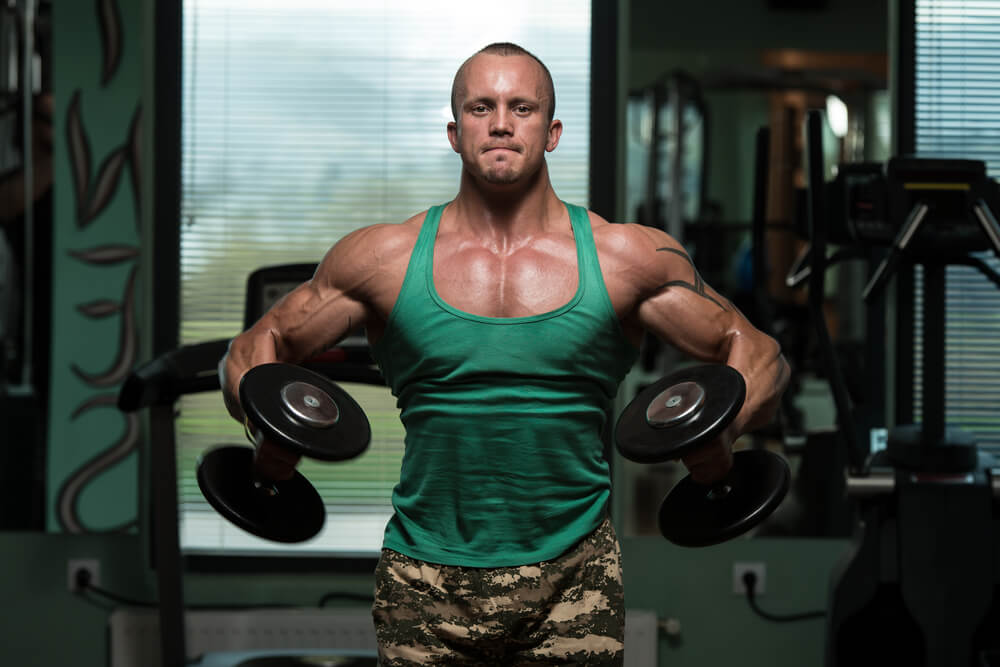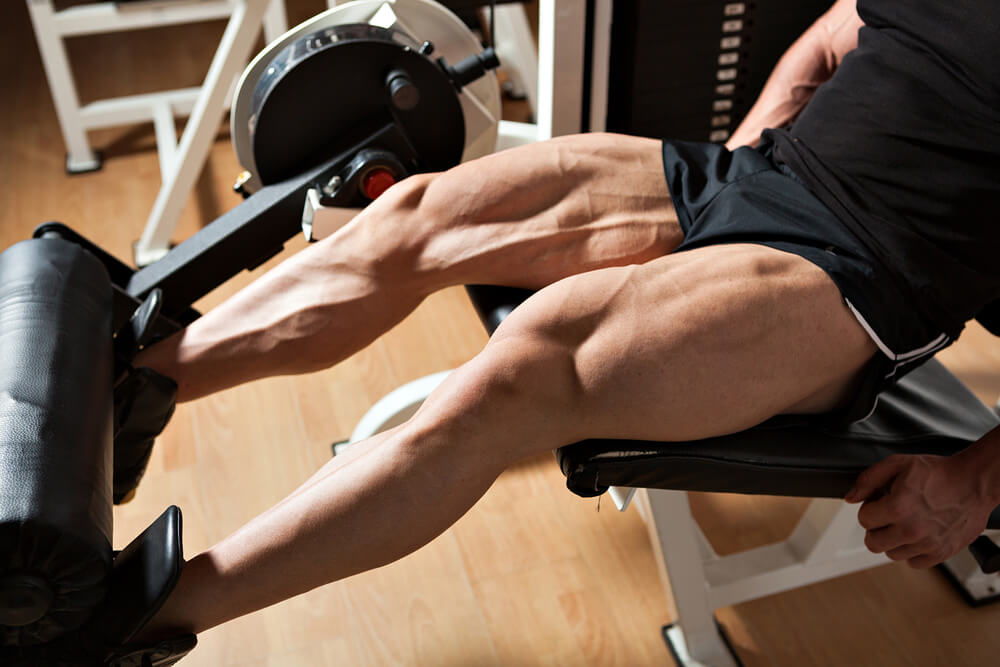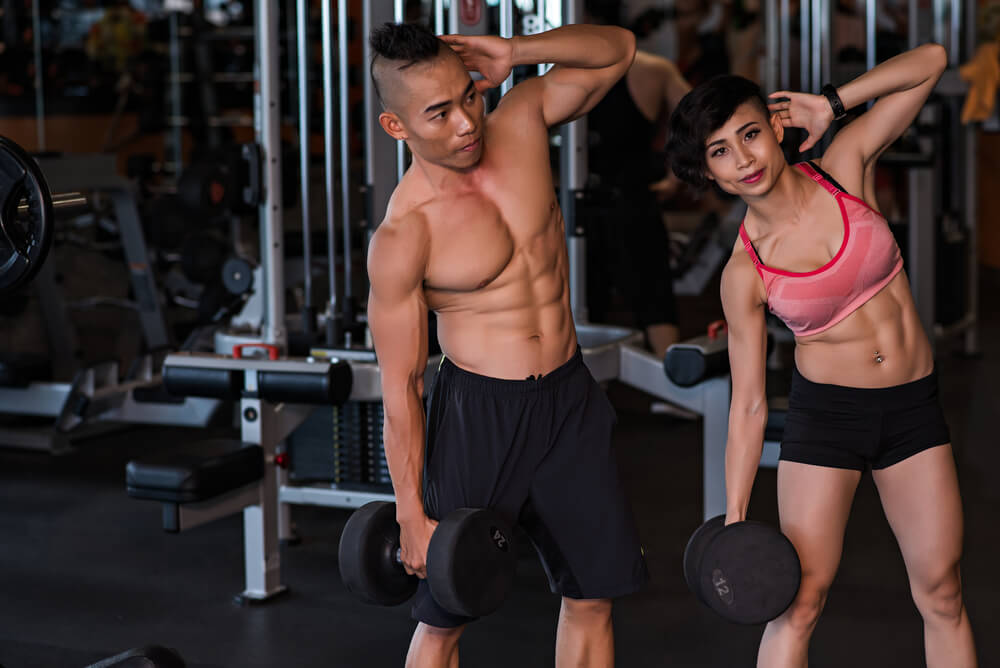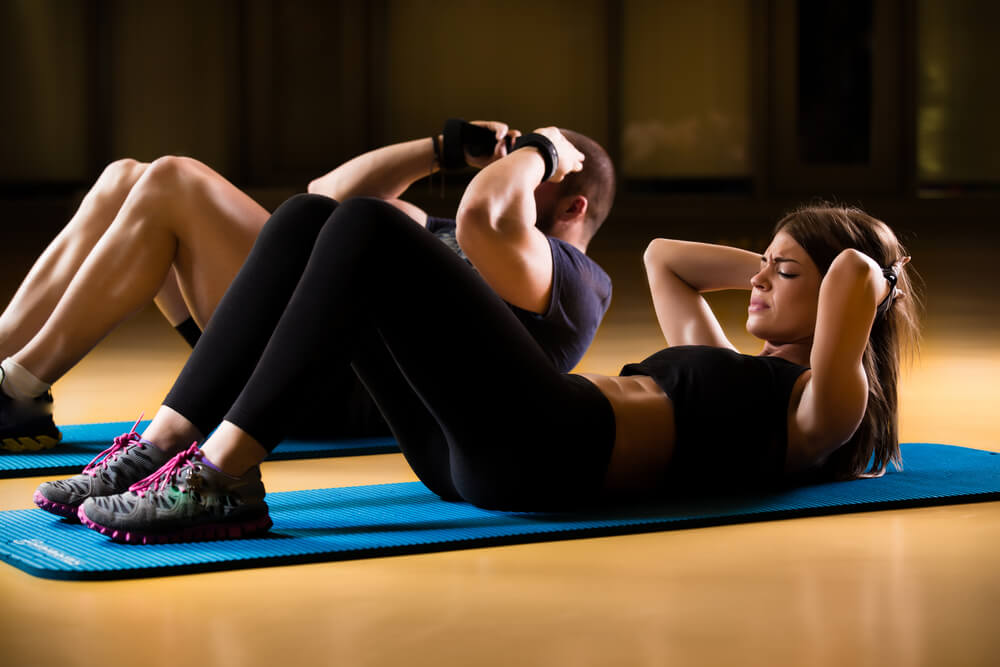
Working out isn’t rocket science. Sure, you can copy the movements you see online, but you may be doing more damage than good if you’re performing exercises that can make you prone to injury.
There are some exercises that place pressure in the wrong areas and cause you to maneuver your body in an unnatural manner. Unfortunately, this can all lead to injuries and permanent damage. Here’s a list of exercises that make you prone to injury and you should definitely avoid, as well as some great exercises you should try instead.

What Are Some Upper Body Moves I Should Avoid?
Don’t Do: Upright Rows
This exercise puts the wrong kind of pressure on your shoulders. Rather than helping build muscle, it creates tension in your joints and causes you to rotate your shoulders in an unnatural way. Standing upright is the key mistake here – some rows work for your body when you bend forward, allowing your shoulder to move more naturally.
Instead Try: Classic Push-Ups Or Facedown One-Arm Rows
Traditional push-ups will target the same desired muscle area, but, if you’re looking for some variety, try doing facedown one-arm rows. Place your right knee and your right hand firmly on a workout bench, your left foot firmly on the ground and hold a weight parallel to the bench in your left hand. Your body is essentially parallel to the ground, with your eyes looking at the bench or the ground; in other words, keep your neck in line with your spine.
Pull the weight up towards your shoulder, keeping it parallel to the bench. Three reps of twelve should do the trick, or, if that’s not enough, feel free to increase the reps.
This exercise will keep the unwanted pressure off your shoulders and provide a more natural way of working out your arm muscles.

Don’t Do: Half-Range Or Assisted Pull Ups
It takes a great amount of back strength to successfully complete a pull-up; this can be a harder feat for beginners in fitness. Some trainers will assist by holding up your knees while you complete the pull-up, alleviating part of your body weight. Don’t go this route.
Pull-ups are designed to target your upper body muscles using the whole weight of your body.
Doing them half-weight doesn’t put your body in the proper form and doesn’t prepare you to do a real pull-up. It’s better to build the upper body muscles and then, when able, complete proper pull-ups.
Instead Try: Band Pull Downs
This can be done with a band in which you stand with your feet hip-width apart, your knees slightly bent and your chest lifted. Step back enough so that there’s tension in the band and pull down so your arms are almost straight. Control is key in this motion to building the muscle.
Alternatively, you can use the weight machine. Set the band bar near your head, and pull diagonally across the front of your body until your hand reaches the opposite hip. Do this for both arms.
Both of these exercises are great for building the same muscles targeted in pull-ups and they can help so that you’ll eventually be able to perform proper pull-ups.

Don’t Do: Behind The Neck Lat Pull-Downs And Behind The Neck Standing Barbell Press
Trying to maneuver your arms and shoulders so that you can pull a lat bar behind your neck is incredibly unnatural and harmful to your shoulders, neck and back. Likewise, the behind the neck standing barbell press does the same thing.
Instead Try: Chest Lat Pull Downs
This exercise uses the lat pull-down machine the correct way. Sit at the back of the bench, slightly lean back and pull the lat bar down to your chest. Your biceps and triceps will feel sore tomorrow from this one.

Don’t Do: Arm Circles With Weights
Arm circles can be a great way to stretch out the shoulder muscles, but adding weight provides similar harm to adding weight when doing side bends. While you may be able to do things with your natural body weight, some exercises were not meant to add extra outside pressure. The additional weight can’t be compensated for by your body and causes your shoulders to struggle in their rotation, which could lead to permanent damage and strain in your shoulders.
Instead Try: Lateral Raises With Weights
Choose an appropriate weight for your size and muscle mass, holding them naturally in your hands, and, standing upright, lift the weights as if your arms are going to create a V, but stop at your shoulders. This keeps your shoulders using natural movement while building the desired arm muscles.

What Are Some Leg Moves I Should Avoid?
Don’t Do: Seated Knee/Leg Extensions
This exercise is done at the sitting machine in which you extend your leg with the weight placed right below the knee. This is incredibly detrimental to your knee joints and puts improper strain on the area. Sometimes when machines try to isolate muscles, they remove the overall functionality the body was designed to use.
Your body is made so that all of your muscles and joints can work together. This machine, in particular, places too much pressure on the knees to do more work than they’re capable of on their own.
Instead Try: Squats
Here’s a natural way to bend your knees and legs and have the right support from the rest of your body. Start with regular squats, being sure to sit in an invisible chair. This repeated motion builds the muscles in your thighs and glutes.
When these become too easy, move up to squatting with a barbell. Start light and gradually progress (it could take a long time to progress the weight for these so don’t overdo it and try and pack it on – that can damage your back, legs, and knees). Form is key here, so make sure you keep the back straight, properly bend and sit in that invisible chair to get just the right motion to build your muscles.

Don’t Do: Inner and Outer Thigh Machines
These machines attempt to isolate the thigh muscles and build on them. However, it’s unnatural to place pressure on your legs and hips in this manner. This can aggravate your lower back and hips, causing serious injury and potential permanent damage.
Besides it’s not the best way to lose inner thigh fat.
Instead Try: Wall Squats
Stand with your back against a wall. Now squat like you’re sitting in an invisible chair. Hold that position – for at least 60 seconds! Here’s an endurance exercise that’ll have your thighs burning and building muscles in no time.

Don’t Do: Curtsy Lunges
These lunges cause a twist in your knees that can give you permanent knee damage. Considering they don’t isolate a new part of the leg over regular lunges, there’s no reason to even consider them.
Save your knees and don’t do these.
Instead Try: Traditional Lunges
Step forward with the right leg and bend it, attempting to reach a 90-degree angle. The left leg is completely straight behind you, with the ball of your foot placed firmly on the ground.
Step forward with the left leg so that it’s bent, attempting to reach a 90-degree angle, and the right leg is straight behind you. Repeat, repeat and repeat! Make sure you keep your hips square facing front and your chest and upper body lifted – a straight back is essential.

What Are Some Abs and Total Body Moves I Should Avoid?
Don’t Do: Side Bends with Dumbbells
Dancers are familiar with side bends, but even for dancers, using dumbbells is not a smart move. For one, don’t do side bends unless your upper body has the flexibility for them. Beyond that, adding the weight of a dumbbell merely puts unnecessary strain on your sides. This is certainly a way of pulling a muscle rather than building it. Your body just wasn’t meant to pull weight while bending over sideways.
Instead Try: Side Planks
Place a mat on the floor, lie on your side and place your forearm on the ground under your shoulder, palm facing downwards. Your forearm should be perpendicular to your spine. Place one leg atop the other so that your body makes a straight line.
Lift your body so that only your feet and forearm are on the ground – this is a side plank! This exercise works your side abdominal muscles in a natural way that’s easy on the bones and joints, relying on your natural body weight rather than adding extra pressure your body isn’t meant to handle.

Don’t Do: Floor Sit-Ups
While sit-ups can work the core and abdominal muscles, they place a lot of strain on your lower back – an area of the body most people already find trouble with and an area that is incredibly difficult, if at all possible, to fully recover from if injured.
Instead Try: Crunches And Leg Lifts
Crunches done properly are an excellent and quick core builder. And the amazing thing is that if you keep doing them, you can increase your reps and still get a workout from them. They’re infinitely muscle building!
Most people, however, do crunches the lazy way – the way that might as well be called neck-lifts. We’re not working out the neck here, so keep your neck straight and in one place.
Lie on your back on the floor (preferably on a mat) and place your hands behind your head. Bend your knees so that your feet are right below your butt. Now look at one spot on the ceiling that is slightly below your line of vision and lift your shoulders off the ground – that’s right, your shoulders! Now repeat! There are dozens of different crunch exercises, so when you get tired of the forward facing crunches, do them to either side, lift one leg, lift both legs – the possibilities are endless.
An alternative to crunches, if you’re tired of them or just can’t help but do neck lifts, are leg lifts. You’ll need to find a gym that has the proper stand for this, though, to be able to do them. It’s not really a machine; it’s just a stand with a couple of bars you can set your forearms on. So get up there, set your forearms down, let your legs hang, and make a straight line with your body. Now, flex your feet and lift your straight legs out in front of you as if you were sitting on the ground, drop them and repeat!

Don’t Do: Jumping Jack Dumbbell Shoulder Press
This is one of those outrageous exercises merely attempting to be new wave and original, but in truth it just opens up a plethora of injury possibilities. As assumed by the name, one does a jumping jack while holding dumbbells/weights in both hands and pushing up with them on the outward jump.
Not only does this look ridiculous, it also doesn’t effectively build your muscles. This exercise will make you prone to knee injury by exerting too much pressure on them and lower back pain, as your body will likely be unable to keep a perfectly straight-line posture while attempting to push weights into the air during a jumping jack.
Instead Try: Burpees
If you’re looking for that all-in-one exercise to target multiple areas at once, burpees are the perfect exercise. Rather than causing your body to compensate for added pressure and forcing you to break out of good form in order to compensate, burpees are a body-only exercise that don’t require added pressure at all.
Essentially, they’re a jumping jack, push-up combo!
First, do a jumping jack and then hit the ground for a push-up. Then stand back up and repeat the process. This exercise works the core, arms, legs and heart. You’ll get your cardio wrapped up with this maneuver.
Conclusion
The sad fact is that some exercises make you more prone to injury. Be smart about your training.
Don’t run unnecessary risks!
If you were using any of the exercise mentioned previously as being risky, stop doing those. Remove those from your gym workout routines. Better yet, replace them with any of the ones we’ve outlined and you’ll thank us later.
By Alyssa Bright
Latest posts by Terry M (see all)
- Garage Gyms - Aug 1, 2018
- Kettlebells – Why They Should Be Added To Your Routine. - Jul 24, 2018
- Weight Belts: What Are They Really For? - May 31, 2018











There is a risk of injury in all the sports. In general, more the contact involved in a sport, more is the danger of getting injured. The most frequent sports injuries include strains, sprain, fracture, contusions and abrasions and concussions.
[…] If you’ve spent any kind of time on YouTube, chances are you’ve seen people doing all sorts of ill-advised activities with gym weights and pulleys (usually because they have no idea how to use the equipment), or they simply slip and fall off a treadmill. Even if you know what you’re doing with a particular lift, there is a chance of injury. […]
[…] you open yourself up to injury. When your form is bad all kinds of injuries can occur. If you round your back during a lift you […]
[…] you training for recovery from an injury? Wanting to lose fat? Desiring more strength? Or do you want to pack on some more […]
[…] Avoiding injury […]
[…] Avoiding injury […]
[…] Avoiding the injury […]